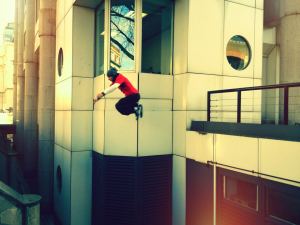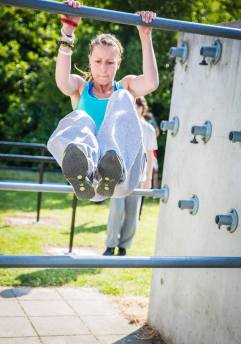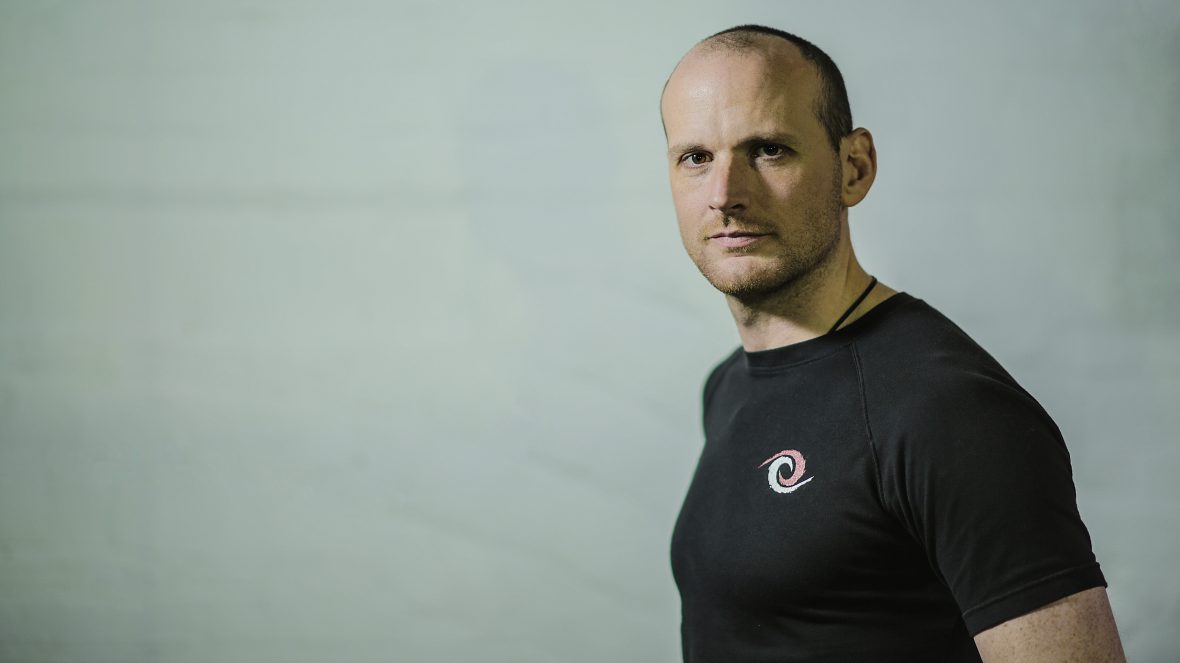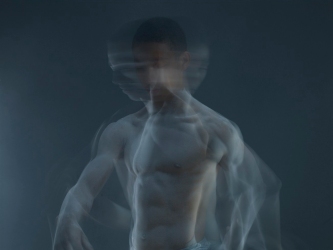Athletes call it ‘the zone’; Maslow named it ‘peak experience’; the martial arts of Japan dubbed it mushin or ‘no-mind’; most recently it has been dubbed simply ‘flow’. Whatever you choose to call it, this elusive state of heightened, focused awareness and immersion in a given activity is without doubt when we are at our most productive, most capable and most effective. It is, arguably, when we are most ourselves – or at least most like the self we potentially could be.
Elite sportspeople train diligently for it, writers persevere through endless blocks for it, adventure athletes risk life and limb for it; yet most of us experience this flow state incredibly rarely and, with current technology encouraging and enabling constant disconnection from our ‘here and now’, this rarefied state of consciousness will likely become harder and harder to access. Yet we’ve never needed it more.
And it’s not just athletes and practitioners of physical disciplines that need to find flow – scientists, artists, authors, architects… the best works in any fields are typically the product of an expert in flow. As F. Scott Fitzgerald said, ‘Genius is the ability to put into effect what is in your mind. There’s no other definition of it’. Genius is pure flow in action.
So, no matter our profession or path in life, we could all benefit from being able to access flow more easily and to bring its enormous power to bear on whatever activity we dedicate that most precious of commodities to – our time.
Take stock for yourself right now: how often would you say you are in flow? How often is there a high degree (for all evidence suggests that flow comes in degrees of intensity) of harmony between your intention, thought and action? Those times when you are completely engaged and fully committed –body, mind and soul – to the task? Is it a daily occurrence? Once a week? Only when you are taking part in a favoured leisure activity?
If you’re anything like the majority of people living in the modern industrialised world it probably isn’t very often or regular. Our hyper-connected days are filled with ever-burgeoning to-do / to-achieve lists, plagued by constant interruption from email, social media, phone calls and texts, and the demands and pressures of a lifestyle based on ‘busy-ness’, haste and distraction seem only to mount as the years pass.
This is a problem. A big one. As we are dragged more and more into this lifestyle of distraction from the present moment, under the beguiling illusion that we have to do these things in order to be productive, we end up becoming hugely ineffective and wasteful or our own energies. We are, more and more, simply reacting to an endless slew of fairly meaningless demands on our time, which means we actually become less productive, less creative, less able to plan well – less active. The result: we are less effective at precisely the things we want to be effective at.
The answer to this problem is simple, it just takes work and a bit of discipline. It’s about making time to find flow. Regular time in a flow state counteracts the distractions of the modern age, brings us back to our centre, clarifies our purpose and reminds us why we are alive in the first place. You’re probably most yourself when you’re at play, and play is a great way to get into flow. But how often do you play these days? And so, the six billion dollar question:
How? How do we access flow on a regular basis?
Option 1: Embark on a path of daily holistic, transformative practice, dedicate a minimum of ten years to its perfection and flow will begin to arise naturally in your life. Proven, effective: but time-consuming.
Option 2: Find a flow hack.
As I’m sure your time is precious, let’s look at option 2.
Flow Hacks
 In his seminal work Flow: The Psychology of Optimal Experience[i], Mihaly Csikszentmihalyi identified several necessary conditions for flow including the need for an activity to have clear and identifiable goals, immediate and regular feedback and a good balance between the perceived difficulty of the task and the perceived skill level of the individual attempting it. Owen Schaffer[ii] went further in 2013 to propose 7 conditions for flow, and Steven Kotler in his fantastic book The Rise of Superman[iii] categorized four varieties of these conditions, calling them external triggers, internal triggers, social triggers and creative triggers.
In his seminal work Flow: The Psychology of Optimal Experience[i], Mihaly Csikszentmihalyi identified several necessary conditions for flow including the need for an activity to have clear and identifiable goals, immediate and regular feedback and a good balance between the perceived difficulty of the task and the perceived skill level of the individual attempting it. Owen Schaffer[ii] went further in 2013 to propose 7 conditions for flow, and Steven Kotler in his fantastic book The Rise of Superman[iii] categorized four varieties of these conditions, calling them external triggers, internal triggers, social triggers and creative triggers.
We have a pretty good understanding of the conditions that are necessary for flow. But what’s a flow hack?
Flow hacks come in many guises, but essentially they are quick ways to access the aforementioned conditions that encourage or enable flow to arise, driving us deeper into ‘the zone’ by their very nature. Effectively, they are shortcuts that force us into the zone. Pain is one, exhaustion is another – see the ‘runner’s high’ of endurance athletes. Danger is also an obvious one – our whole fight or flight response is an example of a flow hack; the brain shutting down the neo-cortex, empowering the amygdala and flooding the body with chemicals that amp up awareness, reaction times, strength, speed and pain tolerance. However, this takes a considerable toll on the body and no one likes to have to out-run a pack of lions just to find a little flow.
Fortunately there are other hacks out there: a little bit of risk, for example, can go a long way.
The quickest and most effective method I have yet discovered is to engage in an activity that requires total physical and mental commitment: note that I say ‘requires’ here – not just ‘desires’: to be a flow hack it needs to be something that you simply cannot do without having to get into that zone from the outset: something that requires you to have a bit of skin in the game. For me, that’s parkour.
The Movement Solution

Parkour – a discipline of adaptive movement over terrain – forces the practitioner to engage in challenges that cannot be overcome without total focus. The problem-solving aspects, the control of fear and the sheer physicality combine to fast-track the individual to a flow state that can last for hours in the more experienced practitioners. Even the simplest movement challenges in parkour will take you out of your comfort zone and force you to be truly present in the moment: and that’s the only time flow can occur.
It’s very important, however, that movement practise isn’t monotonous, routine or thoughtless. Hitting a treadmill while you stare at a TV screen or grinding through a dull gym routine will not get you to the flow state in any hurry, and in fact it won’t even be as much physical benefit to you either. For flow to be triggered there needs to be complexity, mental engagement and challenge as well. It needs to be enjoyable, interesting; something that requires concentration and problem-solving as you go along – something intrinsically holistic in its method.
Parkour, for me, has been all these things because by its very nature it never lets you drop your awareness. Healthy, manageable risk is one of the most effective flow hacks there is, and parkour has that in spades. The simple, visceral nature of this task-oriented physical training powerfully reminds us of our true, wild nature; of where we came from, what shaped our evolution and what enabled us to get to where we are. Parkour focuses attention, clears our perception and removes any and all distractions. And therein lies flow.

The good thing about flow is that, like any human skill, it gets easier through practice. We just have to find ways to practise it regularly and often – this has the effect of greasing the grooves in our neural networks, enabling us to enter the flow state quicker and easier when we call on it. The key words here are ‘regular’ and ‘often’. It can be in small doses, but it must be regular and often. An hour a day of this kind of focused, integrated movement training will align body and mind, improve health and physical capacity and boost energy levels.
What’s the benefit of all this? Spending time in even low levels of flow on a regular basis will begin to have a marked positive effect on your life, beyond the obvious improvement in your performance. The knock-on effects of regular exposure to this state of heightened awareness are increased focus when needed, a significant decrease in stress levels and a corresponding elevation in confidence, self-esteem and happiness. You’ll feel like you can accomplish more and, actually, you will be able to do just that.
And, perhaps most importantly of all, it produces a sense of meaning and purpose within what we do which is so often lacking in our sometimes disjointed lifestyles. In fact, finding a decent flow hack can be the antidote to a whole host of modern ills. Mine’s parkour. What’s yours?
[i] Csikszentmihalyi, Mihayli (1990). Flow: The Psychology of Optimal Experience. Harper & Row. ISBN 978-0-06-016253-5. Retrieved 10 November 2013.
[ii] Schaffer, Owen (2013), Crafting Fun User Experiences: A Method to Facilitate Flow, Human Factors International
[iii] Kotler, Steven (2014), The Rise of Superman. Amazon Publishing.
Join a class: http://www.parkourgenerations.com/training
Take a course: http://www.parkourgenerations.com/certifications




Really enjoyed this in depth article. Flow State is something that truly fascinates me with my movement practice.
LikeLike
Thanks Daniel – fascinates me too.
LikeLiked by 1 person
Superb article.. “Parkour focuses attention, clears our perception and removes any and all distractions. And therein lies flow.” just love Parkour. 🙂
LikeLike
Thanks for the positivity, Narayan. I love it too.
LikeLike
As you asked, my flow hack is gardening, which includes collecting tons of tree seeds, by beating them into sheets with a very big stick, in order to provide the raw material for growing more trees where they’re required, which gives me a great sense of purpose.
I have always seen climbing frames, as we call them here, a fun but slightly dangerous frivolity.
Each to their own, n’est pas?
LikeLike